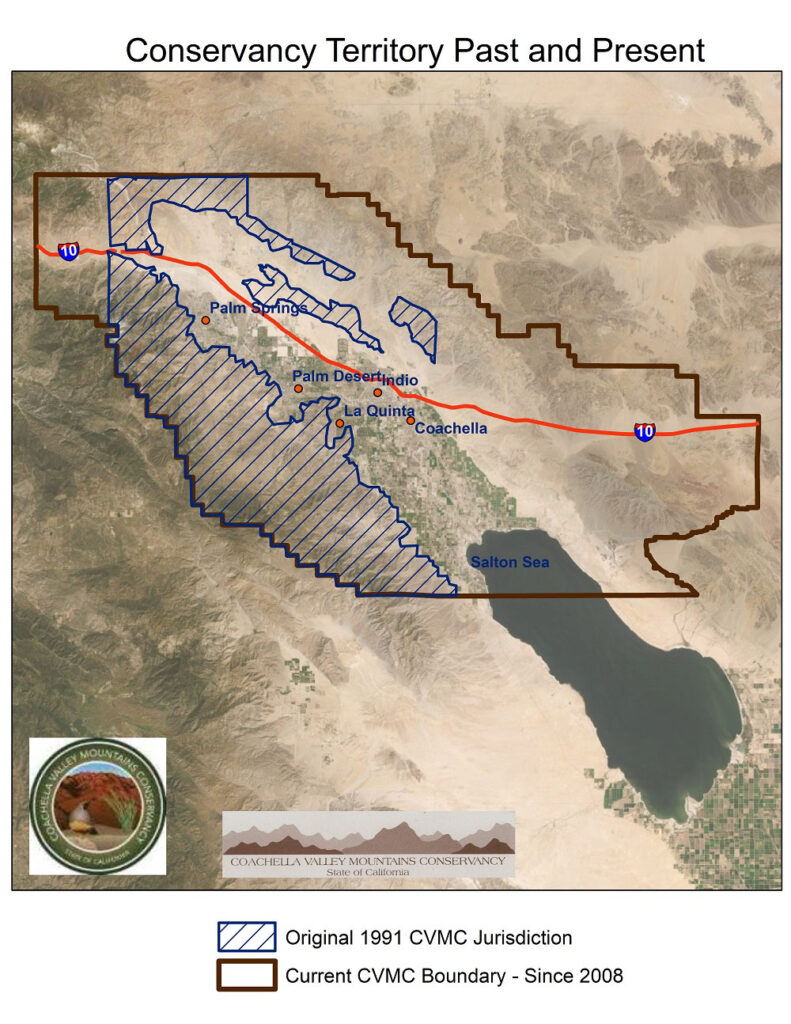Strategic Plan 2020-2025 – Coachella Valley Mountains Conservancy
[ Also available as a download in PDF ]
Strategic Plan 2020-2025
Table of Contents
The Coachella Valley and its Resources
Collaborative Approach and Partners
Goals and Strategies for 2020-2025
Performance Monitoring and Ongoing Dialog
Appendix

Executive Summary
The Coachella Valley Mountains Conservancy was established by the state legislature in 1991 as a public sector land trust with broad powers to protect open space and wildlife within the Coachella Valley and its surrounding mountains. During most of its nearly 30 year history, the Conservancy has focused on funding or facilitating the acquisition of land for perpetual conservation, resulting so far in the acquisition of over 96,000 acres. In recent years, the Conservancy’s work program has expanded significantly to embrace habitat restoration efforts, improved joint land management efforts with partner agencies, enhanced recreational access through trail building and the purchase of a historic ranch and the implementation of the California Water Action Plan in the Coachella Valley.
Local development trends and state policy objectives are now moving the Conservancy to expand its programs to promote sustainable growth, respond to climate change and increase levels of service to traditionally underserved and economically disadvantaged communities.
In response, the Conservancy has adopted a vision for its work plan over the next five years with five key goals:
- Goal 1: Accelerate land acquisitions that support the Coachella Valley Multiple Species Habitat Conservation Plan or otherwise further the Conservancy’s mission.
- Goal 2: Improve management of conserved lands and enhance habitat values though restoration, cleanup or other capital improvement projects.
- Goal 3: Manage water resources to promote conservation while preparing for future human needs.
- Goal 4: Expand access to recreational and educational programs that showcase the wildlife, scenic and cultural resources of the Coachella Valley.
- Goal 5: Promote sustainability and climate change adaptability within the desert and surrounding mountain areas.
The Conservancy will continue to approach its mission using a collaborative model to include community stakeholders, leverage funding opportunities and maximize efficiency by working with its long-time partners such as the Friends of the Desert Mountains and Coachella Valley Conservation Commission, as well as establishing new relationships with other nonprofits, tribes and local public entities.
Mission and Jurisdiction
By 1991, the rapid growth of the cities in the Coachella Valley demonstrated that a coordinated effort to protect the valley’s natural resources was necessary. In response, the Coachella Valley Mountains Conservancy was established by the California Legislature to conserve portions of the Valley as well as the surrounding mountainous areas. In 2008, the jurisdiction of the Conservancy expanded to include the entire Coachella Valley when the Coachella Valley Multiple Species Habitat Conservation Plan was adopted.
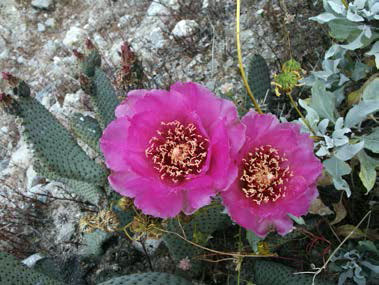
Beavertail Desert Cactus Bloom
The Conservancy’s broad mission as a public land trust is articulated by Public Resources Code section 33501:
“The Coachella Valley Mountains Conservancy is hereby created as a state agency within the Resources Agency to acquire and hold, in perpetual open space, mountainous lands surrounding the Coachella Valley and natural community conservation lands within the Coachella Valley, and to provide for the protection of wildlife resources on, and the public’s enjoyment of, and the enhancement of their recreational and educational experiences on, those lands in a manner consistent with the protection of those lands.”
CONSERVANCY BOARD REPRESENTATION
CA Natural Resources Agency
City of Cathedral City
State Assembly Appointee
Wildlife Conservation Board
CA Department of Finance
City of La Quinta
City of Indio
City of Coachella
Agua Caliente Band of Cahuilla Indians
City of Palm Springs
Governor’s Appointee
University of California
Senate Rules Committee Appointee
City of Palm Desert
City of Rancho Mirage
City of Desert Hot Springs
City of Indian Wells
CA Department of Fish and Wildlife
CA State Parks
Riverside County Board
The Conservancy is governed by a 20 member board of directors, representing each of the nine incorporated cities in the Coachella Valley, the County of Riverside, the Agua Caliente Band of Cahuilla Indians, three citizens appointed respectively by the Governor, the State Senate and Assembly, and several state agencies with land management responsibilities in the Valley. This breadth and diversity of representation enables the Conservancy to serve as an effective coordinator and facilitator of conservation efforts here.
With its professional staff of four, the Conservancy develops and coordinates partnerships with local governments, state and federal agencies, the private sector, and others in the community to protect the magnificent biological, scenic, cultural, and recreational resources of the Coachella Valley. It operates grant programs with funding approved by voter initiatives (Propositions 12, 40, 84, 1 and 68) in support of conservation land acquisition, restoration projects and capital endeavors that enhance the habitat or recreational value of existing conservation land.
Conservancy Funding Sources
| Fund | Year | Amount in Millions |
|---|---|---|
| Environmental License Plate Fund | (1997-2019) | $ 5.1 |
| Proposition 12 | (2000) | $ 5 |
| Proposition 40 | (2002) | $ 20 |
| Proposition 84 | (2006) | $ 36 |
| Proposition 1 | (2014) | $ 10 |
| Proposition 68 | (2018) | $ 7 |
The Coachella Valley and its Resources
Covering approximately 1,850 square miles, the Coachella Valley sits at the convergence of four vast ecological systems – the Colorado (or Sonoran) Desert, the Mojave Desert and the coastal and peninsular mountain ranges – and therefore boasts some of the features of each system, plus unique features that occur in the transitional zones.
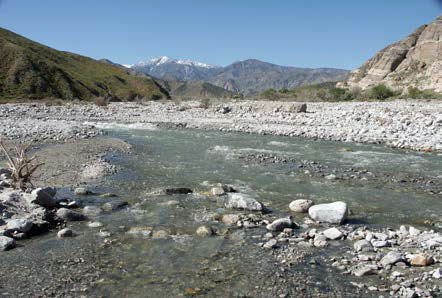
Whitewater Canyon with View of Mt San Jacinto in distance
The importance of protecting the remarkable resources in and around the Coachella Valley has been consistently recognized repeatedly by state and federal policymakers over the past 30 years. The northern boundary of the Coachella Valley is formed by Joshua Tree National Park and the southern boundary by the Santa Rosa and San Jacinto Mountains National Monument (designated by Congress in 1994 and 2000, respectively.) Forming the eastern edge of the valley are the Mecca Hills and Orocopia Mountains Wilderness areas created by the National Park Service, as well as the Bureau of Land Management’s Dos Palmas Area of Critical Environmental Concern. The western edge of the Coachella Valley includes much of the Sand to Snow National Monument established by President Obama in 2016, and on the valley floor, the Coachella Valley Fringe-toed Lizard Preserve System was established by the U.S. Fish & Wildlife Service in 1985 to protect the threatened sand dune ecosystem.
 The mountains surrounding the Coachella Valley stand as a magnificent backdrop to the desert communities, with the prominent peaks of the San Jacinto and Santa Rosa Mountains to the south and west, the San Bernardino and Little San Bernardino Mountains and the deeply eroded Indio Hills to the north and east. The San Jacinto escarpment, in fact, is the steepest in the United States, a nearly sheer rise through five biological life zones from Sonoran Desert at sea level to alpine fell fields atop San Jacinto Peak at 10,800 feet. Because of this extraordinary biological diversity and geological grandeur, the San Jacinto Mountains have been included as a component of the Peninsular Mountains Biosphere Reserve and parts of the Santa Rosa Mountains have been included in the UNESCO Biosphere program.
The mountains surrounding the Coachella Valley stand as a magnificent backdrop to the desert communities, with the prominent peaks of the San Jacinto and Santa Rosa Mountains to the south and west, the San Bernardino and Little San Bernardino Mountains and the deeply eroded Indio Hills to the north and east. The San Jacinto escarpment, in fact, is the steepest in the United States, a nearly sheer rise through five biological life zones from Sonoran Desert at sea level to alpine fell fields atop San Jacinto Peak at 10,800 feet. Because of this extraordinary biological diversity and geological grandeur, the San Jacinto Mountains have been included as a component of the Peninsular Mountains Biosphere Reserve and parts of the Santa Rosa Mountains have been included in the UNESCO Biosphere program.
Palm Canyon, which divides the Santa Rosa and San Jacinto Mountains contains this nation’s largest native fan palm oasis. More than 6,000 palms, in isolated stands and dense groves, dot Palm Canyon, and nearby Andreas and Murray Canyons. Ancient Cahuilla Indian villages, trails, Petroglyphs and pictographs, unique rock fish traps, and burial sites are also found throughout these mountains. The particularly impressive “Panik,” or ancestral village of the Cahuilla, is listed in the National Register of Historic Places, and the area once along the shores of the ancient Lake Cahuilla, is now preserved as part of the Agua Caliente Band of Cahuilla Indians “Indian Canyons Heritage Park.” In fact, Native American artifacts and historic improvements are scattered throughout the entire valley.
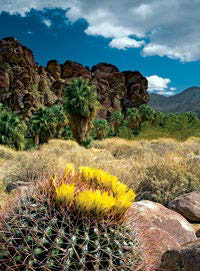
Andreas Canyon
The mountains are home to a wealth of plant and animal species. From the rocky crags to precious desert riparian habitats, the mountains support such diverse species as the endangered peninsular bighorn sheep, the rare desert slender salamander, the least Bell’s vireo, mountain lions, prairie falcons, and golden eagles.
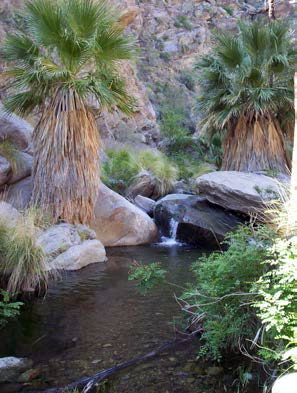
Murray Canyon Palm Oases
The canyons and alluvial fans descending from the mountains provide riparian areas rare in a desert and support a sand transport system that is vital to the habitat value of much of the central Valley and its endangered and threatened species. The San Andreas fault has created a band of palm oases and mesquite hummocks across the northern part of the Valley as well as badlands-like mud hills near Indio that in turn support a different combination of plants and animals.
In the east, the Salton Sea has created marsh, mudflats and other wetland areas that support rare natural communities of plants, which in turn attract multiple species of riparian birds. The Sea anchors its own unique ecological system that continues to undergo natural change as it offers recreational and scenic opportunities. The surrounded area contains rich agricultural land initially cultivated by Cahuilla communities which is important to preserve, both for its ongoing local economic benefits and also for its contribution to preventing loss of plant coverage that reduces carbon sequestration and harms air quality.

View of Salton Sea
For the majority of the residents and hundreds of thousands of annual visitors to the desert communities, the mountains above all mean majestic vistas, from towering snow-covered peaks to the subtle and changing colors of a desert sunset reflected on the slopes. The sloping areas descending from the peaks provide natural diversity and support the valley’s hydrological health, while simultaneously offering outstanding hiking opportunities. And the core of the valley offers varied desert and oasis landscapes that support uncommon species of plants and animals whose presence enhance the quality of life for residents and visitors. Aside from its priceless intrinsic value, the environment of the Coachella Valley, together with its diversified natural and cultural features, is a vital economic resource for Southern California: the landscapes, recreational amenities and educational sites are a major part of the reason visitors and new residents
are attracted to the valley.
History
In its early years from 1991 to 1997, the Conservancy did not receive state funding, so it operated mostly by raising funds from local supporters and businesses. It concentrated on acquiring inexpensive land for open space – usually through the tax default process – and on advocating with other state agencies to conserve land or take steps to protect endangered species. In 1997, the state began providing operating funds and the Conservancy hired its first executive director. A very significant portion of the Conservancy’s efforts then turned to advocating for the creation of the Santa Rosa and San Jacinto Mountains National Monument, which Congress established in 2000. In 2001, the Conservancy received its first allocation of bond funding for capital projects as part of Proposition 12, which enabled it to significantly expand its efforts to acquire land for perpetual conservation.

Coachella Valley Fringe Toed Lizard
From 2000 to 2008, under contract to the Coachella Valley Association of Governments (CVAG), the Conservancy prepared the Coachella Valley Multiple Species Habitat Conservation Plan/Natural Community Conservation Plan (CVMSHCP), which was adopted in 2008 by local cities, the County, Caltrans, and an array of special districts. The CVMSHCP is a 75 year vision and comprehensive vehicle for complying with federal and state endangered species laws by facilitating the issuance of permits needed for private and public construction projects throughout the valley. Through its implementation, the CVMSHCP protects 27 endangered or threatened species as well as pristine habitat areas and open space through its targeted acquisition and land management program. At the same time, it promotes local economic growth and ensures a long-term balance between conservation and development in the valley. The CVMSHCP requires acquiring an additional 144,000 acres of private land for perpetual conservation over the next several decades which would be added to existing federal and state conservation lands to create a 725,000 acre preserve system.
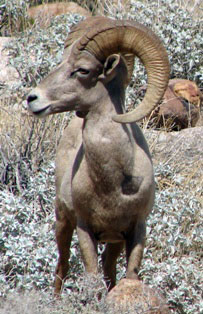
Peninsular Bighorn Sheep
After the adoption of the CVMSHCP, the Conservancy’s efforts for the next 10 years focused on land acquisitions. When CVAG created the Coachella Valley Conservation Commission (CVCC) to oversee CVMSHCP implementation, CVCC retained the Conservancy to serve as its land acquisition manager, a role it plays to this day. Along with conducting transactions on behalf of CVCC to acquire land with CVCC funds, the Conservancy uses state grant funding to support other local public entities and nonprofit organizations such as the Friends of the Desert Mountains to buy lands. The Conservancy board uses the CVMSHCP priorities to guide its acquisitions and grant-making programs. The result is a coordinated conservation land acquisition program that can act quickly to acquire land with important habitat or recreation values, often by leveraging different funding sources efficiently.
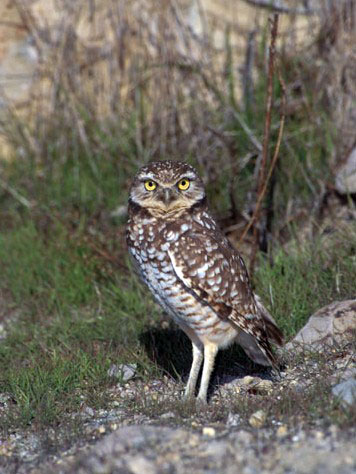
Burrowing Owl
Fortunately, after the 2002 and 2006 elections, the Conservancy received more state bond funding through Propositions 40 and 84 to support acquisitions. The Conservancy coordinates closely with the Wildlife Conservation Board to access federal funds that support acquisitions to protect endangered species habitats. These sources have brought over $70 million to the valley’s conservation programs from state and federal sources, enabling the Conservancy to help protect over 96,000 acres of land in Coachella Valley so far.
In 2010, the Conservancy prepared a conceptual plan for 25 future trails in the Northern Coachella Valley along or near Joshua Tree National Park, which it started implementing in 2014. Two new trails have been completed, and two more are in process, again using state bond funds for support. The Conservancy is also working with nonprofits and federal agencies to upgrade existing trails throughout the Valley and create consistent signage and public informational materials.

Kim Nichol Trail
In 2015, at the Conservancy’s request, the state legislature added board members representing the Cities of Coachella and Indio to ensure more representation from the eastern Coachella Valley, where Conservancy acquisition and restoration work is expanding.
Later that year, the Conservancy launched its Proposition 1 Grant Program, which distributes grants to public agencies, tribes and nonprofits organizations that undertake projects implementing the California Water Action Plan (such as watershed protection or restoration efforts or infrastructure projects that preserve water supply or enhance water quality). Through this program, the Conservancy is managing ongoing capital projects that complement its prior acquisition work by improving the habitat value of conserved land and enhancing the hydrological health of the valley, including the Salton Sea which is partially within the Conservancy’s jurisdiction.

Shumway Ranch
In 2017, the Conservancy acquired the Shumway Ranch in the mountains above Palm Desert, which contains several historic buildings that are currently being evaluated for preservation and restoration. The Conservancy is working with a nonprofit group and a local park district to create a small multi-use facility at the Ranch for environmental and climate change research, as well as for community access for educational, recreational and artistic programs.
Key Proposition 1 Water Bond Projects
| Agency | Project |
|---|---|
| Coachella Valley Conservation Commission | Willow Hole Wash and Salton Sea pond restorations, and Snow Creek watershed acquisition |
| Desert Recreation District | Flood control and groundwater recharge at North Shore and Oasis Parks |
| Friends of the Desert Mountains | Santa Rosa Mountains and Palm Canyon watershed restoration |
| City of Palm Springs | San Jacinto Mountains watershed orchard/dump site remediation |
| Cities of Palm Springs and Coachella | Stormwater diversion and filtration systems |
| Torres Martinez Tribe | Salton Sea wetlands restoration projects |
| Department of Fish & Wildlife and Centers for Natural Lands Management | Pupfish refugia restoration at Dos Palmas and Coachella Valley Preserves |
| University of California/Riverside | Salton Sea Crust remediation planning |
| City of Coachella | Regional stormwater planning |
Most recently, in 2019, the Conservancy launched its Proposition 68 Grant Program, which seeks to expand public access to safe parks, wildlife preserves, trails and recreation areas, mitigate the effects of climate change and encourage water conservation and drought preparedness. A high priority for this program is to assist valley communities that are economically disadvantaged or that have been historically underserved by outdoor recreational opportunities.
Collaborative Approach and Partners
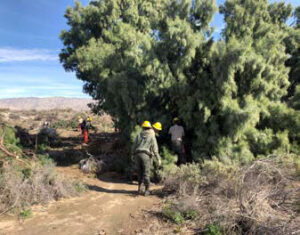
Partnership Tamarisk Removal Project
The Conservancy’s successes over the past three decades have been greatly enhanced by working in partnership with local public agencies and nonprofit organizations in the Coachella Valley in a manner that maximizes the value of limited staff and funding resources:
- The Friends of the Desert Mountains (FODM), founded about the same time as the Conservancy, has been designated by our governing statutes (see Section 33704 of the Public Resources Code) as the Conservancy’s nonprofit partner. With its professional staff and large and dedicated corps of volunteers and private contributors, FODM is able to provide invaluable support for projects on public land.
- Maintaining close relationships with CVAG and CVCC enabled the Conservancy to play a key role in the drafting and development of the CVMSHCP and continue to allow it to serve a coordinating role among the various entities that acquire land in the valley for conservation.
- The Agua Caliente Band of Cahuilla Indians has been represented on the Conservancy board since its founding and has a professional staff that handles conservation acquisitions on tribal land and implements the tribe’s Habitat Conservation Plan, which covers land outside the CVMSHCP. The tribe also helps to address cultural resources identified in Conservancy restoration projects.
- The Center for Natural Lands Management, the Wildlands Conservancy, the Friends of the Palm Springs Mountains and the Mojave Desert Land Trust have worked with the Conservancy for years on discrete acquisition, restoration, wildlife management and trails projects.
- Newer partnerships with the Torres Martinez Desert Cahuilla Indians (with its innovative Salton Sea wetlands projects), Shumway Ranch.org (planning the restoration of that historic site) and the Desert Recreation District (developing parks in areas lacking in such facilities) are allowing the Conservancy to expand conservation, recreation and educational efforts in underserved and economically disadvantaged communities.
- The Conservancy board members representing the County of Riverside, University of California Riverside and all nine cities in the Valley serve as liaisons to those entities, which frequently provide invaluable help on technical and localized issues.
- The Conservancy staff has ongoing working relationships with the local offices of the Bureau of Land Management, Joshua Tree National Park and the U.S. Forest Service, which help facilitate restoration or trail projects that are on or near federal land.

Sunset over Valley – Photo Credit, Tom Brewster
Goals and Strategies for 2020-2025
Goal 1. Accelerate land acquisitions that support the CVMSHCP or otherwise further the Conservancy’s mission.
Achievements
The Conservancy’s acquisition efforts have resulted in the acquisition of over 96,000 acres of conservation land, either by the Conservancy itself or by its grantees or partners. (See Appendix for an overview of Conservancy acquisition work.) The Coachella Valley has been transformed forever by these collective efforts, as its developed core is now ringed with magnificent lands that will remain open space and natural habitat area in perpetuity. As a result, this valley will never be burdened by the sprawl that many parts of the nation endure due to unbridled population growth. Yet there is much more to do: under the CVMSHCP, more than 80,000 acres must still be acquired, and there are other large sections of the two national monuments and areas adjacent to Joshua Tree National Park that possess land with important habitat values and great recreational potential that could also be acquired.
Challenges
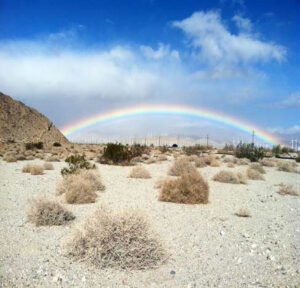
View from Angel Cove, Palm Springs, CA
With most of the largest acreage acquisitions completed, new transactions are increasingly difficult because of various complications in obtaining the remaining private parcels. Many owners have rejected repeated offers to purchase the land due to their desire to be paid more than the fair market value and many parcels have complex title problems that would require litigation to resolve. Numerous other parcels are very close to land uses that would conflict with conservation, and still others contain improvements or contamination that necessitates demolition or cleanup.
Other obstacles result from the fact that many existing partners have amassed large inventories of land and are hesitant to acquire additional parcels in light of the difficulty of raising funds for monitoring and maintenance. Under current law, the Conservancy itself can only acquire small parcels in national monument areas without going through a lengthy process that frustrate most sellers. Critically, the Conservancy’s current bond funding resources are not nearly enough to complete the acquisitions required under the CVMSCHP (which would be in excess of $100 million, using current land prices.) Additionally, the conditions of federal grants often make those funds hard to use because many sellers are not willing to wait until all of the conditions are satisfied.
Strategies
To meet these challenges, the Conservancy will revise some of its existing practices and employ new approaches as it redoubles its efforts to continue the successful acquisition program. The Conservancy will seek to:
-
1a. Develop new marketing approaches to convince holdout owners to sell, for example by projecting and explaining ongoing ownership costs, comparing the present value of money to speculative future sales, suggestion options like partial or “bargain” sales that have favorable seller tax consequences, etc.
-
1b. Consider buying improved or contaminated parcels, and then undertaking demolition, cleanup or restoration.
-
1c. Explore new sources of funds for acquisition without competing with nonprofits by applying to governmental or foundation programs.
-
1d. Expand the search for willing sellers in parts of the Valley that we have not previously targeted and resume the use of the Conservancy’s authority to take title to small parcels in the
-
1e. Request cities, local districts or new joint powers authorities to hold title to conserved lands and build new partnerships with more nonprofits to hold title by providing technical assistance and facilitating cooperative management arrangements.
Goal 2. Improve management of conserved lands and enhance habitat values though restoration, cleanup or other capital improvement projects.
Achievements
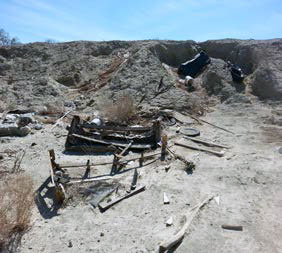
Dumping
Managing, monitoring and maintaining 96,000 + acres of conservation lands – many of which are remote and hard to access, while others are adjacent to urbanized uses that negatively impact the habitat value of the conservation land – is tough and complex. The collective management capacity of CVCC, FODM and the Conservancy has grown gradually in accordance with a joint 2013 memorandum of understanding (MOU). Through it, the three agencies share expertise and resources and reach out to federal agencies that own neighboring lands, resulting in a cooperative management mechanism that has served the valley well.
Challenges

Social Trail
As the amount of conserved land and open space has increased, the informal management apparatus among CVCC, FODM and the Conservancy cannot keep up with that growth.
The Conservancy and its partners have limited staff capacity, especially as it relates to regulatory enforcement and public safety matters. As the development footprint expands, the potential for incompatible activities to negatively impact conservation land increases. Also, while more recreational use of conservation lands is generally a very positive development, it puts more strain on the management and maintenance mechanisms. In particular, unauthorized off-highway vehicle (OHV) use and unregulated shooting activities degrade conservation lands. Furthermore, most Conservancy funding sources cannot be tapped for ongoing management, so additional resources are needed.
Strategies
To respond to these challenges over the next five years, the Conservancy will seek to augment its staff resources to build upon its land management capacity:
-
2a. Update existing partnership MOUs, seek to add ranger/enforcement capacity, possibly with federal agencies or County law enforcement participation.
-
2b. Seek new cooperative relationships with public agencies such as water or park districts, potentially using joint exercise of powers agreements.
-
2c. Explore seeking grants or additional state funding for land stewardship or adding a biologist or environmental scientist position to Conservancy staff.
-
2d. Encourage Proposition 1 and 68 grant program applications for projects that complement prior acquisition and habitat conservation projects, such as restoration or cleanup projects that will streamline ongoing management over the long term.
-
2e. Expand ongoing liaisons with local offices of federal agencies and Joshua Tree National Park.
Goal 3. Manage water resources to further conservation while preparing for future human needs.
Achievements
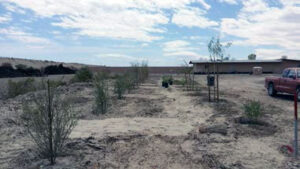
Torres Martinez (TM) Wetlands Restoration Project
The Conservancy’s acquisition program has preserved numerous sites that contain scarce water resources, such as the Whitewater Preserve along the Whitewater River and numerous undisturbed alluvial fans that play a key role in feeding the aquifer under the Valley. Since initiating its Proposition 1 grant program in 2015, the Conservancy has funded many innovative watershed protection and restoration projects that implement the California Water Action Plan in the Coachella Valley. The Conservancy has prioritized projects that support efforts to restore the Salton Sea and has established some excellent partnerships with stakeholders working on Salton Sea area projects. (See chart of key Proposition 1 awards on page 9.)
Challenges
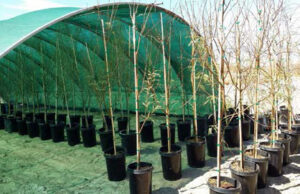
TM Wetlands Restoration
With the passage of Proposition 1, the Conservancy began working for the first time on large scale restoration or infrastructure projects, which demand very different skills and staffing levels than real estate transactions. Despite the enormous need for restoration and related projects, there is a lack of technical capacity among local entities and conservation nonprofits to handle the new flow of funding, making our progress slower than hoped. In addition, there is a lack of coordination among stakeholders and the various approving public entities, who often have inconsistent approval or implementation processes.
Furthermore, the total amount of Proposition 1 funding for the Coachella Valley – $10 million – is far short of the need in light of the recurring drought here, and the prospects for future funding of water-related projects are uncertain. In particular, the rapid shrinking of the Salton Sea exacerbates all water and habitat management issues in the eastern part of the valley. Finally, there is limited public understanding of, and governmental support for, water management efforts in the desert, potentially complicating the task of obtaining additional resources.
Strategies
Moving forward in the coming years, the Conservancy will work to expand its relationships and capacity to address water-related issues:
-
3a. Create ongoing, collaborative endeavors with Salton Sea-related public entities, tribes and water districts as well as new partnerships with nonprofits.
-
3b. Develop a public educational program on the desert’s unique relationship to water planning that targets residents as well as policy makers.
-
3c. Expand staff outreach program to historically underserved and disadvantaged communities to promote multi-benefit projects that address water resource issues along with air quality, transportation and public health matters.
-
3d. Hold continuing grant program and staff training workshops that provide instructions on the application process along with facilitating access to other sources of technical assistance on project development, implementation and management.
-
3e. Establish standing programs that focus on water resources to prepare for future drought and growth, thereby making the Conservancy eligible for additional funding sources.
Goal 4. Expand access to recreational and educational programs that showcase the wildlife and cultural resources of the Coachella Valley.
Achievements
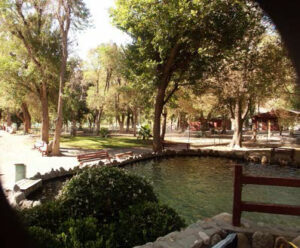
Whitewater Trout Farm
The Conservancy’s acquisitions are generally open to the public for passive activities (such as cross-country hiking) except where they threaten the habitat values. The lands along the Whitewater River were improved with facilities for the Whitewater Preserve operated by the Wildlands Conservancy. In recent few years, the Conservancy initiated its Northern Coachella Valley Trail project, which to date has completed two trails (in Desert Edge and the Indio Hills) and is currently working on several others. In 2017, the Conservancy acquired the historic Shumway Ranch off Highway 74, which is being transformed into a multipurpose community facility that will provide access for historic preservation, conservation research, arts activities and youth summer recreation. In addition, the Conservancy’s Proposition 68 grant program is making funds available for additional interpretive features, such as at the Santa Rosa and San Jacinto Mountains National Monument Visitor Center or at local trailheads.
Challenges
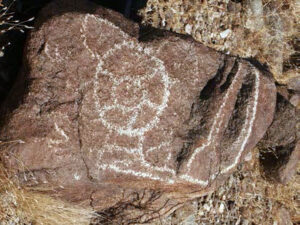
Petroglyphs in Southern Santa Rosa Mountains
There continues to be a lack of access to outdoor recreational facilities, especially in northern and eastern parts of the Coachella Valley and for residents of underserved or disadvantaged communities. As hiking has overtaken golf as a favored leisure activity here, the greater number of hikers is leading to an increase in informal “social” trails on conservation lands, which can cause inadvertent damage to the habitat and cultural artifacts. Population growth has also increased the amount of unpermitted activities such as off highway vehicle use and shooting that damage plants and animal habitats, including those of endangered species. Finally, the lack of wide recognition of human benefits arising from open space and habitat conservation – including better public health for residents and youth, invaluable real-time science education and economic development from tourism and enhanced property values – has traditionally led policymakers to assign a lower priority to increasing recreational activities.
Strategies
Addressing these types of challenges requires the Conservancy to develop new staff expertise and establish new collaborative ventures to complement its historic achievements and allow it to more fully implement our mission in parts of the valley where we have not been active previously.
-
4a. Utilize the Proposition 68 grant program to focus on serving economically disadvantaged and underserved communities near conservation lands.
-
4b. Develop additional Northern Coachella Valley trails and upgrade existing trails with signage and interpretive features.
-
4c. Create a public educational campaign in conjunction with state agencies and local partners to highlight the health and educational benefits of outdoor recreation.
-
4d. Support the improvement and preservation of Shumway Ranch in conjunction with the new non-profit group, Shumway Ranch.org, along with other partners.
-
4e. Negotiate cooperative agreements with federal agencies, park districts or County departments to assist with enforcement of regulations on open space and provide information or assistance to hikers and others.
Goal 5. Promote sustainability and climate change adaptability within the desert and surrounding mountain areas.
Achievements
Although the Conservancy has not historically focused directly on sustainability or responding to climate change, its work has fortuitously promoted those policy goals: its acquisition work has limited development in primarily undisturbed areas and its restoration programs have promoted the growth of native plants that help with carbon sequestration.
Challenges

Restoration of Marsh near Salton Sea
As the impacts of climate change become more documented, the need to establish programs in the Coachella Valley that directly respond to it has become more critical. A major obstacle has been the failure by policy makers and the public to understand the critical role the desert and surrounding mountains can play in combatting climate change. For example, the presence of numerous invasive plant species inhibits native vegetation and wastes water that could be used to restore wetlands to support plant life, particularly in playa areas near the Salton Sea. Also, development still tends to focus on undisturbed land or unused agricultural land instead of completing or redeveloping infill areas. Finally, lack of public open space and amenities such as trails in many parts of the valley forces residents to drive long distances for recreation, resulting in increased greenhouse gas production.
Strategies
The availability of Proposition 68 funds affords the Conservancy a great opportunity to jump-start new programming to combat climate change:
-
5a. Provide outreach and technical assistance where needed through Conservancy grant programs to organizations focusing on communities underserved by outdoor recreation amenities and economically disadvantaged parts of the valley.
-
5b. Seek restoration projects for Prop 68 funding that address invasive species or combat negative impacts of climate change that cannot be funded by Proposition 1.
-
5c. Support public awareness programs that showcase the connection between the local environment and greenhouse gases.
-
5d. Tailor watershed restoration and acquisition programs to promote smart growth policies of local cities as well as the carbon sequestration goals and methods of the State.
-
5e. Develop partnerships with local transportation and planning agencies that expand access to outdoor recreation to reduce vehicle miles travelled for leisure purposes.
Performance Monitoring and Ongoing Dialog
The Conservancy board, recognizing that goals and strategies are most meaningful when they are consistently monitored and evaluated, will undertake an annual public workshop each January to assess the Conservancy’s progress with this Strategic Plan and recommend any course corrections. Local stakeholders and the general public are invited to submit comments or ideas at any time to the Conservancy at the address below, or by speaking at any board meeting. Contact us:
Coachella Valley Mountains Conservancy
73-70 Fred Waring Drive, Suite 112
Palm Desert, CA 92260
(760) 776-5026
generalinformation@cvmc.ca.gov
www.cvmc.ca.gov
Strategic Plan approved by Conservancy Board on November 4, 2019.
Appendix A. Map
Map
See separate file labeled as Appendix A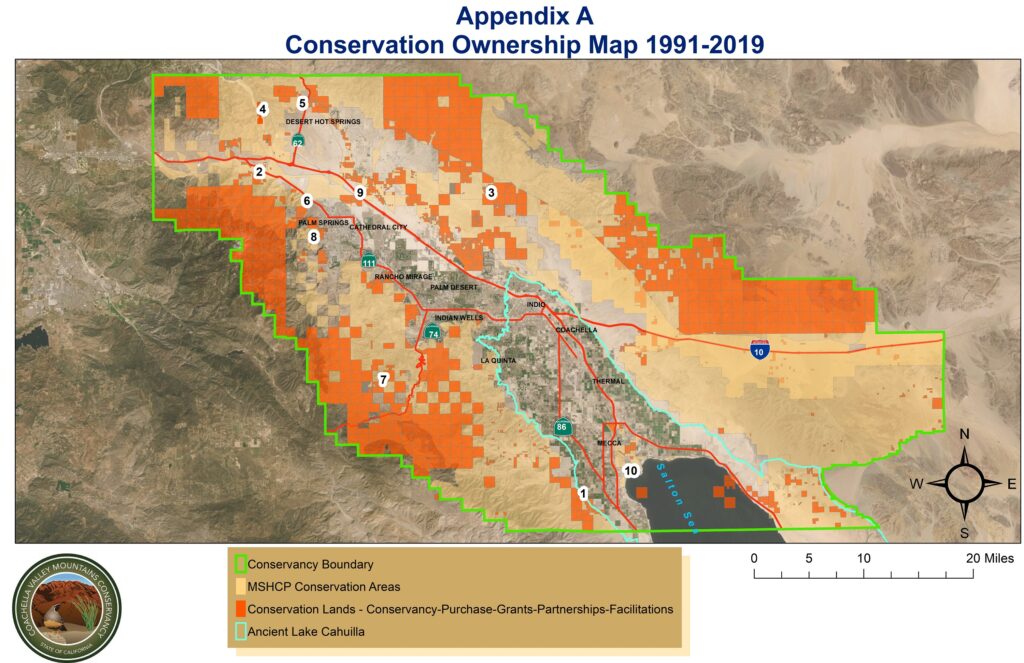
Appendix B. Acquisition Milestones
Acquisition Milestones 1991-2019
Since 1991, the Coachella Valley Mountains Conservancy has assisted with negotiation and acquisition efforts for approximately 96,000 acres of conservation land that has been preserved in the 21 conservation areas consisting of an area that spans 1.2 million acres in the Coachella Valley. The most significant include: (numbers coincide with locations on map in Appendix A.)
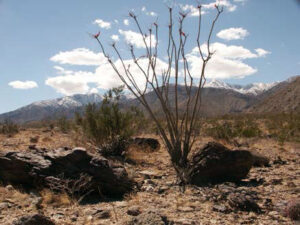
1) 1999-2012 – The Southern Santa Rosa Mountains – 9,000-acre partnership venture among FODM, BLM, WCB, and the Conservancy. This area contains invaluable cultural artifacts and plays a key role in the hydrological health of the valley.

2) 2000-Present – Snow Creek/Windy Point and Stubbe Cottonwood Canyon Conservation Areas: since the early 2000’s; funding acquisitions of approximately 2,220 acres. Preserving this area is critical to the long-term functionality of wildlife movement corridor linking the San Jacinto Mountains and the San Bernardino Mountains, which allows free movement of bighorn sheep, coyotes, mountain lions and other covered species.
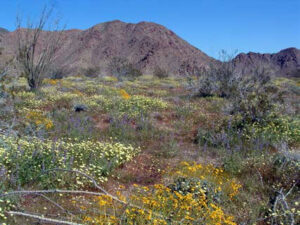
3) 2003-Present – The Joshua Hills – over 10,000 acres which function as a critical wildlife movement corridor between the CVFTL and Joshua Tree National Park.
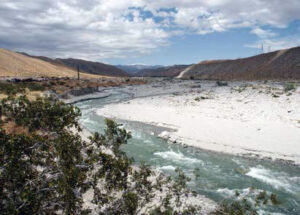
4) 2002-2008 – Whitewater Canyon Preserve – over 645 acres containing important biological and riparian resources values for the endangered arroyo toad, least Bell’s vireo and Southern Willow Fly Catcher. It also a source of fluvial sand transport for the Whitewater Flood Plain.
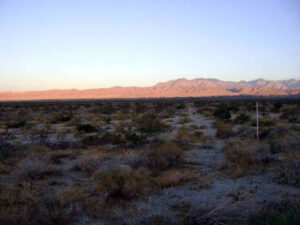
5) 2009-2013 – The Upper Mission Creek Hwy 62 Corridor has critical biological and watershed significance for LeConte’s Thrasher, Desert Tortoise, LSB Linanthus and other covered species. After complex and lengthy negotiations, the Conservancy and its partners were able to purchase and protect approximately 1,781 acres in this area.
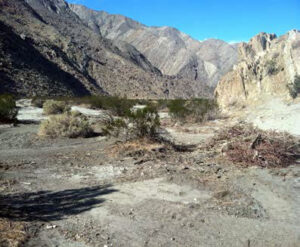
6) 2012-2014 – Angel Cove – Shadowrock (Chino Cone) – The Conservancy worked for many years to acquire approximately 562 acres of land in the Chino Cone area of the San Jacinto Mountains. Preserving this site was critical because it includes one of the Valley’s last remaining undeveloped alluvial fans and is a critical wildlife movement corridor for the Peninsular bighorn sheep.

7) 2014 – Historic Shumway Ranch – 640 acres prominently placed in a transition zone at the edge of the Pinyon area where Grapevine Canyon descends sharply onto the desert floor. It contains critical habitat for bighorn sheep, increasingly vital to that species as climate change occurs. The Conservancy is working to preserve 3 historic buildings and facilitate re-use of the ranch as a multi-purpose community amenity.

8) 2017-Schlesinger – 657 acres in the heart of the Peninsular bighorn sheep territory in the Santa Rosa and San Jacinto Mountain. It is also a source of water for the Coachella Valley’s aquifer and the location of magnificent scenic resources and recreational opportunities.
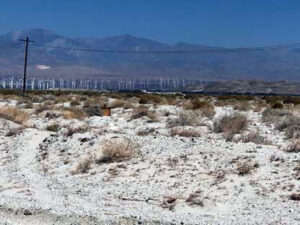
9) 2018 – Whitewater Flood Plain – Dweck – 339 acre property with critical habitat for the Coachella Valley milkvetch and historic channels of the Whitewater River, which brings flow from the San Gorgonio River and fluvial sand transport to the valley floor.

10) 2016-2019 – CV Stormwater Channel – The Conservancy matched funds in a partnership acquisition to acquire 870 acres of property near the Salton Sea to perform future critical riparian habitat restoration projects.



